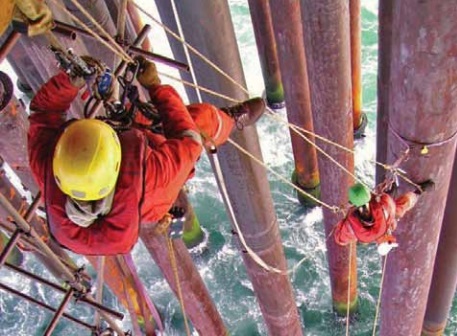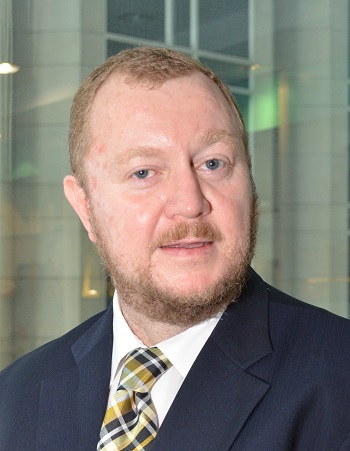AUSGROUP’s profitable scaffolding business is the subject of possible acquisition by 8 to 10 international global maintenance service providers.
 Ausgroup unit MAS' rope access is a safe, quick work positioning technique used worldwide to access and perform tasks at height, throughout the oil and gas industry.
Ausgroup unit MAS' rope access is a safe, quick work positioning technique used worldwide to access and perform tasks at height, throughout the oil and gas industry.
Photo: CompanyAt an analyst briefing last Friday, AusGroup’s management said that it is considering parting with its scaffolding and access business ‘for the right price’.
The Group has appointed MacQuarie Capital (Australia) as its financial advisor to evaluate offers.
The relevant units include its wholly-owned subsidiaries MAS Australasia, Modern Access Services Singapore and AusGroup Corporation. This business has scaffolding and access activities in Australia, Singapore and Thailand, as well as customers that include the developers and operators of major resources projects in Australia (Gorgon, Wheatstone and Icthys LNG developments).
Proceeds from the disposal will come in handy in paying down its multi-currency debt notes of A$106.4 million due on 20 October 2016, noted AusGroup Managing Director Eng Chiaw Koon. The Group had issued S$110 million 7.45% Notes due in 2016 two years ago pursuant to a S$350 million Multicurrency Debt Issuance Programme arranged by DBS Bank.
As at 31 December, the Group had cash reserves of A$30.7 million and total borrowings of A$192.3 million, of which A$137.3 million will be due in less than a year.
The slow down in capital expenditure spending by the oil & gas industry has affected AusGroup's profitability: The Group posted a net loss of A$69.8 million in 2QFY2016, largely due to impairment of receivables.
An extended delay in the full commercialization of its Port Melville facility, combined with the poor performance by its fabrication and manufacturing business in both Australia and Singapore resulted in increased pressure on cash reserves. In view of this, the Group agreed to write down the carried work in progress balances by A$44.6m in exchange for a cash settlement of A$21.9 million to be received in Q3FY2016.
Excluding the one-offs (legal costs for ongoing litigation, share option exercise, impairment of receivables, transformation program, restructuring costs and R&D credits), the adjusted EBITDA would have been A$2.5 million for 2QFY2016 (A$3.1 million for 1QFY2016).
The Group has completed restructuring its fabrication and engineering services support segment in Australia. The headcount reduction is expected to bring in annualised savings of A$15 million. It is also restructuring its operations in Singapore.
Meanwhile, order momentum has been picking up for the Group. It secured orders outside the oil & gas sector in the past 6 weeks. Order intake for January was A$2.5 million, bringing the value of its outstanding order book to A$318 million as at 31 January 2016.
|
Below are some questions raised at the analyst briefing and the answers provided by Mr Eng and former MD Gerard Hutchinson.
We did a sale & leaseback of our Singapore property in July 2013. Raising capital at that time means that our rental rates are now 40% higher than market rates because we locked them in for 10 years.
If we took the sale & leaseback option in the current environment, it would be more costly in the long run.
Q: What is the timeline for the operation of the Port Melville facility?
On 25 February, there will be a hearing on an appeal by an environmental group against the decision by the Department of Environment to approve AusGroup’s fuel distribution facility. The environmental group claimed that the prescribed action given to AusGroup was insufficient to protect the environment.
Q: What amount was exposed with respect to the impaired receivables?
So far, we have received 75% of the pared down balance of receivables. We do not see further impairment charges on these contracts. Q: What are your tax credits driven by?
|








